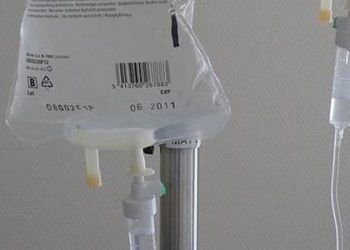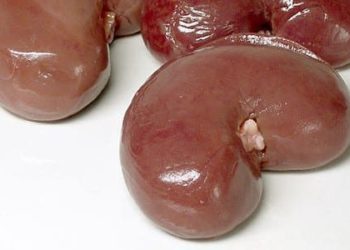2 Minute Medicine Rewind July 14, 2025
1. Prolonged hospital stay in mild to moderate intracerebral hemorrhage (ICH) was predicted by younger age, higher income, medical insurance, prior antithrombotic use, in-hospital infections, and geographic region.
2. Extended hospitalization may not be necessary for improved recovery in mild to moderate ICH.
Evidence Rating Level: 2 (Good)
In this multicenter prospective cohort study, Zhang et al. investigated the predictors of prolonged hospital length of stay (LOS) and its relationship with functional outcomes in patients with mild to moderate intracerebral hemorrhage (ICH) in China. Using data from the ChinaQUEST registry, 1,055 ICH patients were included after excluding those with severe disease, in-hospital mortality, or outlier LOS. Prolonged LOS was defined as hospitalization longer than 14 days. Multivariable logistic regression identified several predictors of prolonged LOS, including younger age, higher household income, possession of medical insurance, history of antithrombotic drug use, in-hospital infections, and hospital region. The median LOS was 20 days, and 73.4% of patients exceeded the 14-day threshold. However, both unadjusted and adjusted analyses, as well as sensitivity analyses using propensity score matching, demonstrated that prolonged LOS was not associated with better outcomes at 3 or 12 months, defined as a modified Rankin Scale score of 3–5 or death. These findings suggest that while socioeconomic and clinical factors influence LOS, extending hospitalization beyond 14 days does not improve long-term functional outcomes in this patient population. The results emphasize the need for optimized discharge planning and efficient resource utilization without compromising patient care.
1. MLC901 significantly improved post-concussion symptoms, quality of life, and mood at 6 and 9 months.
2. MLC901 was safe and well tolerated with high adherence and no serious adverse events.
3. MLC901 did not significantly improve complex attention compared to placebo at 6 months.
Evidence Rating Level: 1 (Excellent)
This double-blind, placebo-controlled, multicenter phase III trial evaluated the efficacy and safety of MLC901 (NeuroAiD™II), a botanical supplement derived from traditional Chinese medicine, for treating cognitive impairment following mild traumatic brain injury (TBI). Given the absence of effective pharmacological treatments for cognitive sequelae of mild TBI—affecting up to 40% of patients—this study aimed to assess MLC901’s effect on complex attention, using the CNS Vital Signs (CNS-VS) test as the primary outcome at 6 months. A total of 182 adults aged 18–65 years, 1–12 months post-mild TBI and with cognitive complaints, were randomized to receive MLC901 or placebo for 6 months. While the primary outcome (complex attention) showed no significant difference between groups at 6 months (LSMD = −1.18; p = 0.58), secondary outcomes demonstrated statistically and clinically significant improvements in post-concussion symptoms (Rivermead Post-Concussion Symptoms Questionnaire), quality of life (QOLIBRI), and mood (Hospital Anxiety and Depression Scale) at both 6 and 9 months in the MLC901 group. Importantly, benefits persisted after treatment cessation. MLC901 was well tolerated with no serious adverse events. Although cognitive improvements as measured by CNS-VS were not observed—possibly due to cultural and linguistic limitations of the tool—the consistent improvements in clinical outcomes support MLC901’s potential utility in managing post-concussion symptoms.
Risk of dementia following gabapentin prescription in chronic low back pain patients
1. Gabapentin use was associated with a 29% increased risk of dementia and 85% increased risk of mild cognitive impairment (MCI) in chronic low back pain patients.
2. Non-elderly adults (18–64 years) had over twice the risk of dementia and MCI with gabapentin use compared to non-users.
3. The risk of cognitive decline increased with higher frequency of gabapentin prescriptions.
Evidence Rating Level: 2 (Good)
This large retrospective cohort study investigated the association between gabapentin use and the development of dementia and mild cognitive impairment (MCI) in adults with chronic low back pain. Using deidentified data from the TriNetX national database spanning 2004 to 2024, the authors identified over 1.4 million eligible patients, ultimately including 26,416 gabapentin users and an equal number of matched controls after propensity score matching for demographics, comorbidities, and pain medications. Patients prescribed gabapentin six or more times after diagnosis were found to have significantly higher risks of both dementia (RR 1.29; 95% CI 1.18–1.40) and MCI (RR 1.85; 95% CI 1.63–2.10) within 10 years. The effect was more pronounced in non-elderly adults (18–64 years), with risk ratios exceeding 2.0, particularly in the 35–64 age group. A dose-response relationship was observed: those with 12 or more prescriptions had a higher incidence of both dementia and MCI than those with 3–11 prescriptions. The study concludes that gabapentin use in chronic low back pain is associated with increased risk of neurocognitive decline, and clinicians should be vigilant in monitoring long-term cognitive outcomes, especially in younger patients and those requiring prolonged therapy.
Antiseizure Medication Prescription Patterns for Treatment of Post-Traumatic Epilepsy
1. Newer-generation antiseizure medications (ASMs) were better tolerated and more likely to be maintained than older ASMs.
2. Only 23% of patients were referred to epilepsy specialists despite high rates of pharmacoresistance.
Evidence Rating Level: 3 (Average)
This study analyzed antiseizure medication (ASM) prescription patterns in 84 patients with post-traumatic epilepsy (PTE) following severe traumatic brain injury (TBI), using data from a prospectively maintained single-center database (2002–2018). PTE was defined as a seizure >7 days post-injury, with ≥6 months follow-up. Patients were categorized by ASM type—older (e.g., phenytoin) vs. newer (e.g., levetiracetam)—and assessed for pharmacoresistance, neurology referral, and functional outcomes via the Glasgow Outcome Scale (GOS). At PTE onset, 53% were on newer ASM monotherapy, 27% on older ASMs, and 20% on polytherapy. Newer ASM monotherapy was more likely to be maintained (OR 4.6, p=0.02), while older ASMs were associated with treatment changes. Despite 54% of patients trialing ≥2 ASMs, only 23% were referred to epilepsy specialists. Pharmacoresistance, present in 32% by 2 years, was predicted by decompressive hemicraniectomy (OR 6.0) and initial polytherapy (OR 7.2), and correlated with worse GOS scores. These findings support newer ASM use, early monotherapy, and timely epilepsy referrals to improve long-term outcomes in PTE.
1. Thrombolysis-to-puncture time (TTP) >70 minutes significantly reduces the odds of successful recanalization and 90-day functional independence.
2. There was no increased risk of symptomatic intracranial hemorrhage (ICH) with shorter TTP.
Evidence Rating Level: 2 (Good)
This pooled analysis of 1,104 patients from two nationwide registries in China (ANGEL-ACT) and Germany (GSR-ET) investigated the relationship between thrombolysis-to-puncture time (TTP) and outcomes in patients with acute ischemic stroke (AIS) due to anterior circulation large vessel occlusion treated with intravenous thrombolysis (IVT) followed by endovascular thrombectomy (EVT). Patients were grouped by TTP intervals (≤30, 31–50, 51–70, and >70 minutes), and outcomes assessed included successful recanalization, functional independence at 90 days (mRS 0–2), and rates of intracranial hemorrhage (ICH). Multivariable analysis revealed that longer TTP was significantly associated with lower odds of successful recanalization and good functional outcome. Specifically, patients with TTP >70 minutes had reduced odds of successful recanalization (adjusted OR = 0.47) and mRS 0–2 (adjusted OR = 0.56) compared to those with TTP ≤30 minutes. No significant differences in symptomatic ICH were observed across TTP groups. These findings underscore the critical importance of minimizing in-hospital delays between IVT and EVT in bridging therapy. The results support current guidelines recommending against delaying thrombectomy to observe for IVT response.
Image: PD
©2025 2 Minute Medicine, Inc. All rights reserved. No works may be reproduced without expressed written consent from 2 Minute Medicine, Inc. Inquire about licensing here. No article should be construed as medical advice and is not intended as such by the authors or by 2 Minute Medicine, Inc.









